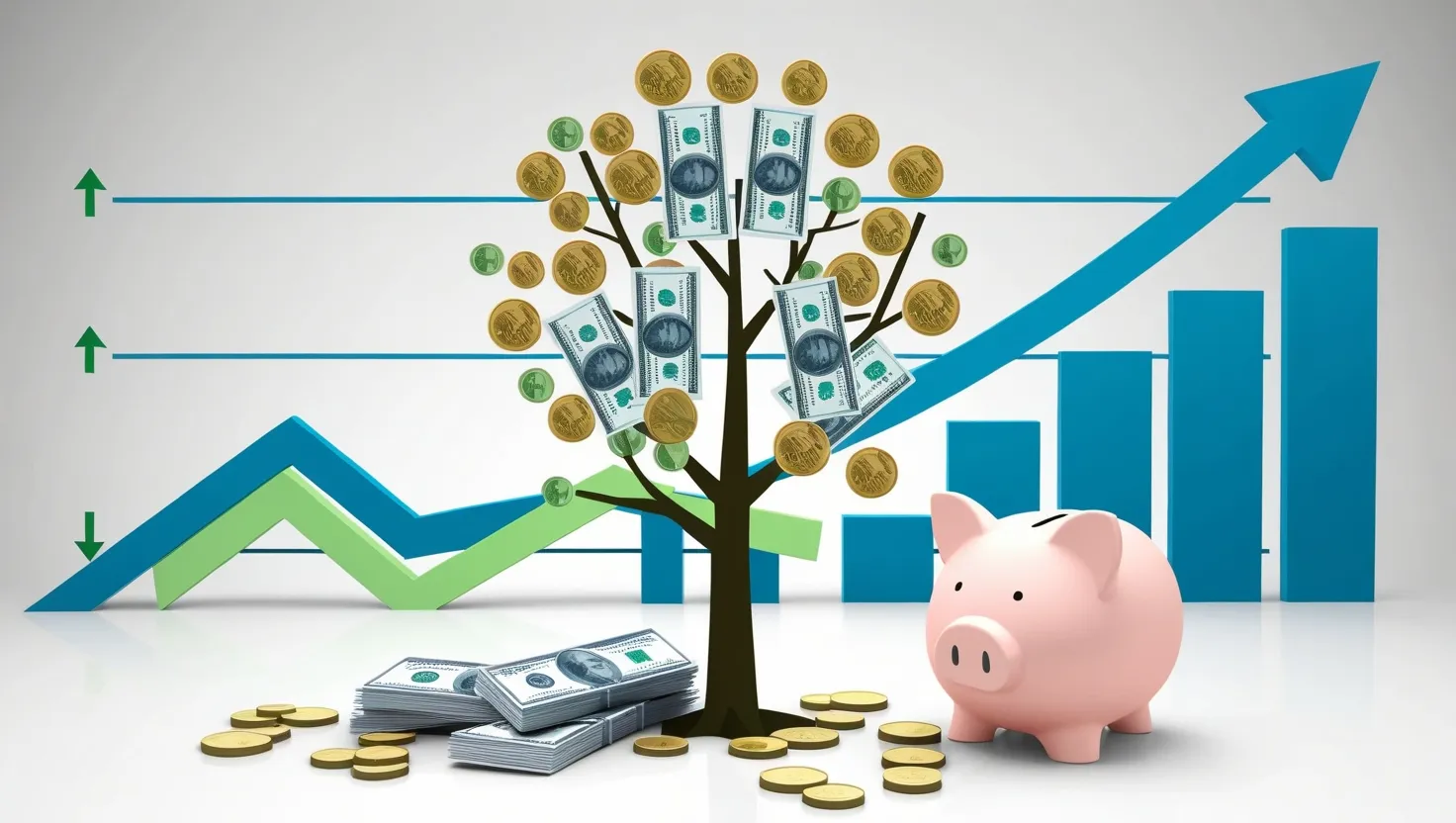Maximizing Your 401(k) Without the Complicated Finance Jargon
When I started thinking about retirement, I realized that most people treat their 401(k) like it’s some mysterious thing that only financial experts can understand. The truth is simpler than that. Your 401(k) is just a container where you store money for later, and the money inside can grow if you make smart decisions. I want to walk you through this in the simplest way possible, because you don’t need to be a math genius to make your retirement significantly better.
The biggest mistake I see people make is leaving free money on the table. Yes, you read that right—free money. Your employer is willing to give you extra cash just for saving for retirement, but most people don’t take full advantage of it. This happens because nobody explained it clearly enough. Think of it like this: if someone offered you money for just showing up to work, you’d take it, right? That’s exactly what employer matching is.
Here’s the reality that many people don’t know. If your company matches 50% of what you contribute up to 6% of your salary, and you only contribute 3%, your employer stops matching at 3%. That missing 3% match is just gone forever. On a $60,000 salary, that’s $900 a year you’re leaving behind. Over 30 years, with growth, that could become $50,000 or more. It’s not the sexiest financial advice, but it’s real money that could change your retirement lifestyle.
Why does this happen so often? Most people are confused about how much to contribute. They think they need to figure out some perfect number based on complex calculations. The real approach is much easier. You just need to contribute enough to get the full match. That’s it. Once you do that, you can increase from there if you want, but the match is the floor, not the goal.
Let me tell you about a strategy that feels almost magical because it’s so simple and so powerful. It’s called automatic contribution increases, and it works because it uses basic human psychology against itself. Here’s how it works: every time you get a raise, you tell your 401(k) plan to automatically take a tiny piece of that raise and put it toward retirement. Most companies let you set this up in five minutes on a computer.
Imagine you get a 3% raise this year. You could program your 401(k) to bump up your contributions by 1% of that raise. You’ll still feel the other 2% in your paycheck, so your lifestyle stays the same. But your retirement account just got stronger without you even noticing. Next year, if you get another 3% raise, the same thing happens again. This compounds over time in ways that feel almost impossible.
The psychological trick here is brilliant. When you get a raise, your brain tells you that you have more money to spend. So spending it feels normal. But if you never see it in your paycheck because it goes straight to retirement, you never miss it. I know people who started with 3% contributions and, after doing this for 15 years, they’re now contributing 12% without ever feeling poor. That’s the power of small, gradual changes.
Now, here’s where most people get confused about their actual investments inside the 401(k). They think the choices are complicated, but they’re actually not. The most important thing to understand is that every fund you can pick has a cost. This cost is called an expense ratio, and it’s a percentage of your money that goes to pay the people managing the fund. If you pick a fund with a 1% expense ratio instead of one with 0.15%, you’re throwing away money every single year. Over a career, this difference adds up to tens of thousands of dollars.
Think about it this way. If you have $100,000 in your 401(k) and you’re paying 1% in fees, that’s $1,000 a year gone. If you could cut that to 0.15%, you’re saving $850 a year. That $850 isn’t just gone—it stays in your account and grows. After 20 years, that difference could be $30,000 or more, depending on how your money grows. This is why the most successful retirement savers focus on finding the cheapest index funds available.
Index funds are your friend if you want to keep things simple. An index fund just tracks a basket of stocks or bonds, so it doesn’t require fancy management. Because of this, they cost less. Instead of trying to pick individual stocks or guess which fund manager will beat the market, you just pick a fund that owns everything in a certain market. This sounds boring, but boring tends to work really well for retirement.
Here’s something most people don’t think about: your portfolio will change over time without you doing anything. Say you start with 70% stocks and 30% bonds. Six months later, the stock market goes up. Now you might be at 75% stocks and 25% bonds. That doesn’t sound like much, but it means your portfolio is now riskier than you planned. This is where rebalancing comes in, and it’s honestly one of the best-kept secrets of successful investing.
Rebalancing is just a fancy word for “fixing what the market broke.” Once a year, you look at your portfolio and ask yourself: Is this still the mix I wanted? If not, you buy more of what went down and sell some of what went up. This might feel backwards—buying things that are cheaper—but that’s actually the opposite of what most people do. Most people want to buy things that are going up and sell things that are going down, which is the recipe for losing money. Rebalancing forces you to do the smart thing automatically.
“The best investment is in the tools of one’s own trade.” – Benjamin Franklin
I want to introduce you to something that might actually change your retirement prospects, especially if you’re younger. It’s called a Roth 401(k), and it’s becoming available at more companies. Here’s the difference between a regular 401(k) and a Roth 401(k), explained in the simplest way possible.
With a regular 401(k), you put in money before taxes. Your paycheck is smaller by the amount you contribute, which means you pay less tax this year. With a Roth 401(k), you put in money after taxes. Your paycheck is smaller by the amount you contribute, but you already paid taxes on it. This sounds worse, right? Here’s where it gets interesting. When you retire, with a regular 401(k), you have to pay taxes on the money when you take it out. With a Roth 401(k), you don’t pay any taxes. You just take the money out.
So which one should you choose? If you’re young and earning less money now than you’ll earn later, the Roth usually wins. Why? Because you’re paying taxes now at a low rate, and you’ll never pay taxes again on that money. But if you’re older and earning a lot now, the regular 401(k) might make more sense because you save more taxes this year. Have you thought about what tax bracket you’ll be in when you retire?
Let me paint a picture of what actually happens when you do all of this together. Imagine someone starting their career at age 25 making $50,000. They contribute 6% to get the full match. That’s $3,000 a year. Then they set up automatic increases of 1% per year whenever they get a raise. They pick index funds that cost almost nothing to own. They rebalance once a year, and they pick the Roth option since they’re young and in a low tax bracket.
Fast forward to age 65. That person probably has around $1.2 to $1.5 million saved up, depending on market conditions. That didn’t require being a financial genius. It didn’t require earning a huge salary. It required three things: starting early, being consistent, and making smart choices about fees and allocations. Most of the growth didn’t come from their contributions—it came from the money growing over 40 years.
“Wealth is the product of man’s capacity to think.” – Ayn Rand
The reason most people don’t end up with this result isn’t because the strategy is hard. It’s because they don’t actually do it. They start strong and then stop increasing their contributions. They pick expensive funds because the company highlighting them make them sound important. They panic when the market drops and change their strategy. They chase performance and buy what just went up. These emotional decisions destroy wealth more than any fee ever could.
Here’s what I want you to do differently. First, check right now if you’re getting the full employer match. If not, increase your contribution this week. Don’t wait for January or some other date. Second, set up automatic increases tied to your salary. Third, look at the fees in your current funds. If any fund has an expense ratio above 0.25%, find a cheaper alternative. Fourth, decide whether the regular 401(k) or Roth makes more sense for you. Fifth, commit to rebalancing once a year, maybe on your birthday or at the start of each year.
“An investment in knowledge pays the best interest,” someone once said, and that applies to your 401(k) too. You don’t need to know everything about finance to succeed with retirement saving. You just need to understand a few simple principles and then execute them consistently. The people who become rich aren’t usually smarter than everyone else—they just do boring, simple things over and over for a long time.
Your 401(k) is one of the most powerful tools available to regular people who want to build wealth. The fact that it grows tax-deferred means your money compounds faster than it would in a regular investment account. The fact that employers match contributions means you can get free money. The fact that you can automate contributions means you don’t have to think about it. When you combine all of this with low-cost investing and smart annual adjustments, you’re not just saving for retirement—you’re setting yourself up for real financial independence.
The question isn’t whether you can afford to optimize your 401(k). The question is whether you can afford not to. What decision will you make about your retirement starting today?






